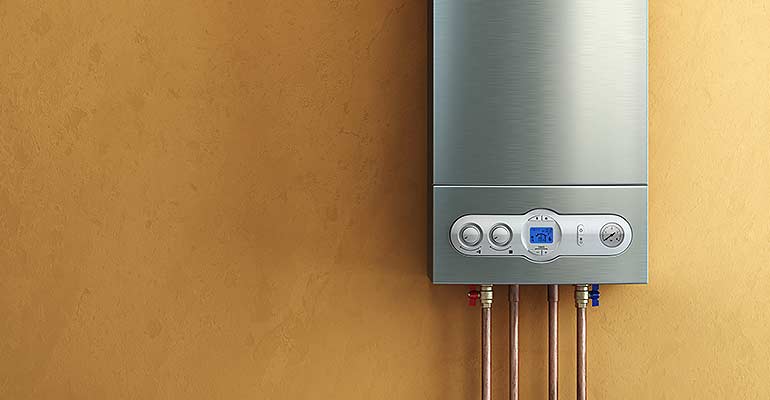Tips on How to Maintain Your Home's Hot Water System in Good ConditionProfessional Guidance on Maintaining Your Home's Hot Water SystemEnsuring Longevity of Your Home's Hot Water System: Maintenance Tips
Tips on How to Maintain Your Home's Hot Water System in Good ConditionProfessional Guidance on Maintaining Your Home's Hot Water SystemEnsuring Longevity of Your Home's Hot Water System: Maintenance Tips
Blog Article
Do you find yourself in search of information and facts around How to Maintain a Hot Water Heater in a Few Simple Steps?

Hot water is necessary for everyday convenience, whether it's for a rejuvenating shower or washing recipes. To ensure your warm water system runs efficiently and lasts much longer, normal maintenance is vital. This short article gives functional tips and insights on just how to preserve your home's warm water system to stay clear of interruptions and costly repairs.
Intro
Preserving your home's warm water system may appear complicated, yet with a few easy steps, you can guarantee it operates efficiently for years to find. This overview covers everything from comprehending your warm water system to do it yourself maintenance ideas and knowing when to hire specialist help.
Relevance of Maintaining Your Warm Water System
Normal maintenance not only expands the lifespan of your hot water system yet also ensures it runs efficiently. Overlooking upkeep can lead to decreased effectiveness, greater energy bills, and also early failure of the system.
Signs Your Warm Water System Demands Upkeep
Knowing when your warm water system needs interest can stop significant issues. Look out for indications such as irregular water temperature level, strange noises from the heating unit, or corroded water.
Recognizing Your Hot Water System
Before diving into maintenance jobs, it's useful to recognize the standard components of your hot water system. Usually, this consists of the hot water heater itself, pipelines, anode poles, and temperature level controls.
Monthly Upkeep Tasks
Regular monthly checks can help catch minor problems before they intensify.
Purging the Hot Water Heater
Purging your hot water heater gets rid of debris build-up, boosting performance and lengthening its life.
Monitoring and Changing Anode Rods
Anode poles prevent corrosion inside the tank. Inspecting and replacing them when worn out is crucial.
Inspecting and Adjusting Temperature Settings
Readjusting the temperature level setups makes certain optimum efficiency and safety and security.
Do It Yourself Tips for Upkeep
You can perform several maintenance tasks yourself to keep your warm water system in leading problem.
Looking for Leakages
Regularly evaluate pipelines and links for leakages, as these can lead to water damages and greater costs.
Examining Stress Alleviation Valves
Examining the stress safety valve guarantees it operates appropriately and prevents excessive stress build-up.
Shielding Pipelines
Protecting warm water pipes decreases warm loss and can save energy.
When to Call a Professional
While DIY upkeep is valuable, some concerns call for expert know-how.
Complicated Issues Requiring Professional Aid
Instances consist of significant leaks, electrical problems, or if your hot water heater is continually underperforming.
Regular Expert Maintenance Benefits
Professional upkeep can consist of complete evaluations, tune-ups, and making certain conformity with security requirements.
Conclusion
Regular upkeep of your home's warm water system is vital for efficiency, longevity, and price financial savings. By following these tips and recognizing when to look for professional aid, you can make sure a trustworthy supply of hot water without unexpected disturbances.
Water Heater Maintenance Tips
Test the TPR Valve
Shut off the power and the cold-water supply valve. Place a bucket under the pipe connected to the temperature-pressure-release (TPR) valve on the top or side of the tank. (This valve opens if the tank pressure gets too high.) Lift the valve’s tab to let some water out, then let go. If water keeps flowing, drain the tank partway, unscrew the old valve with a pipe wrench, and install a new one. Check the Anode Rod
Put a hose to the tank’s drain cock and let out a few gallons of water. Now fit a 1 1/16-inch socket onto the rod’s hex head on top of the heater (or under its top plate) and unscrew the rod. If it’s less than ½ inch thick or coated with calcium, buy a new one, wrap its threads with Teflon tape, put it back in the tank, and tighten securely. Use this segmented rod if headroom above the tank is limited. Drain the Tank and Wash Out Sediment
Drain the remaining water in the tank into the bucket, then stir up the sediment on the tank’s bottom by briefly opening the cold-water supply valve. Drain and repeat until clean water comes out of the hose. Close the drain cock, refill the tank, and turn its power back on. Adjust the Temperature
Find the temperature dial on the side of the tank and unscrew its cover. Adjust the dial to 120 degrees using a flathead screwdriver. For every 10 degrees the temperature is lowered, you can expect to save up to 5 percent in energy costs. Turn the water heater off or the thermostat down to its lowest setting if you plan to be away from home for more than three days. Insulate the Pipes
Buy some self-sticking 3/8-inch-thick foam pipe insulation that matches the pipes’ diameter. Slide the foam over the hot-and cold-water pipes as far as you can reach. Insulating the cold-water pipe prevents condensation in summer. Peel the tape and squeeze the insulation closed. If the pipe is 6 inches or less from the flue, cover it with 1-inch-thick unfaced fiberglass pipe wrap. https://www.thisoldhouse.com/plumbing/21016402/how-to-maintain-a-water-heater

I hope you enjoyed our article about How to Maintain a Hot Water Heater in a Few Simple Steps. Thanks a ton for taking time to read our article post. So long as you enjoyed reading our blog post please make sure you remember to pass it around. Thank you for your time. Revisit us soon.
Click Here Report this page